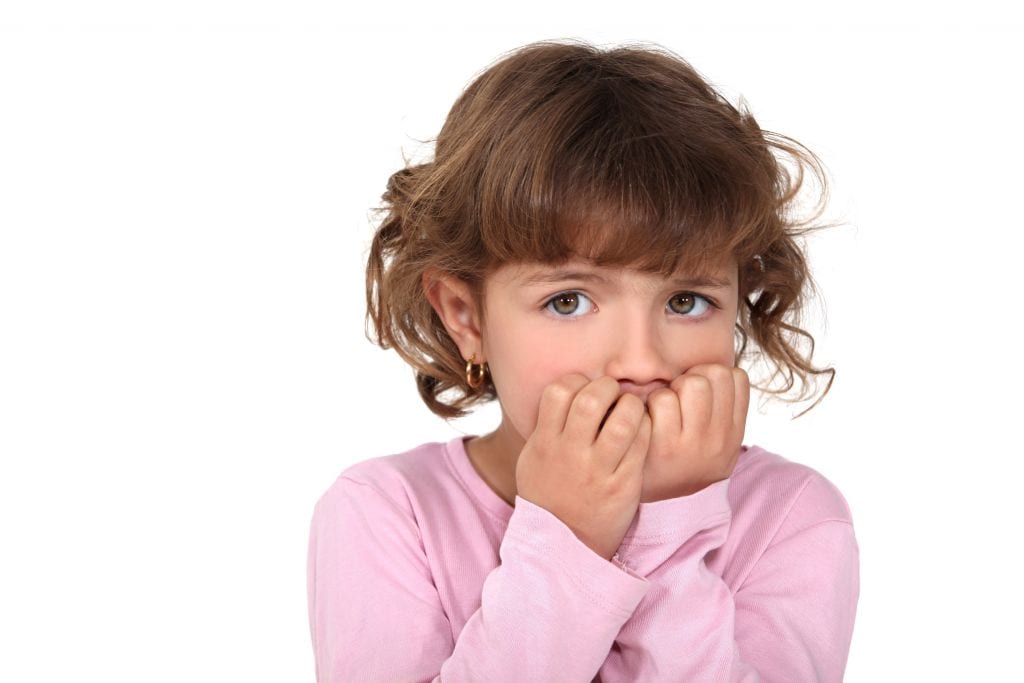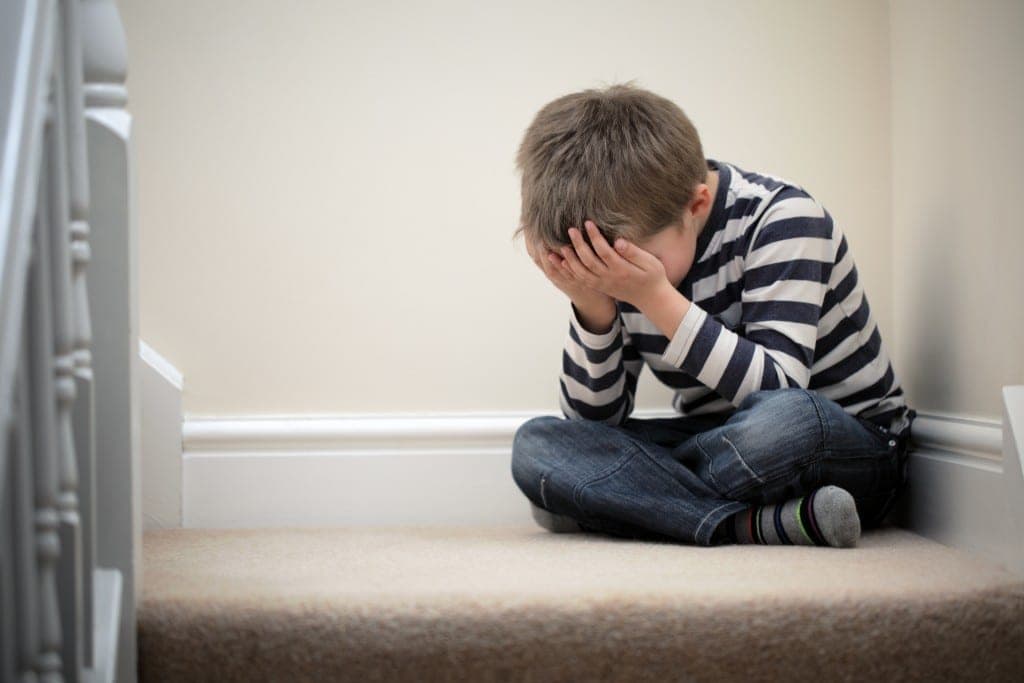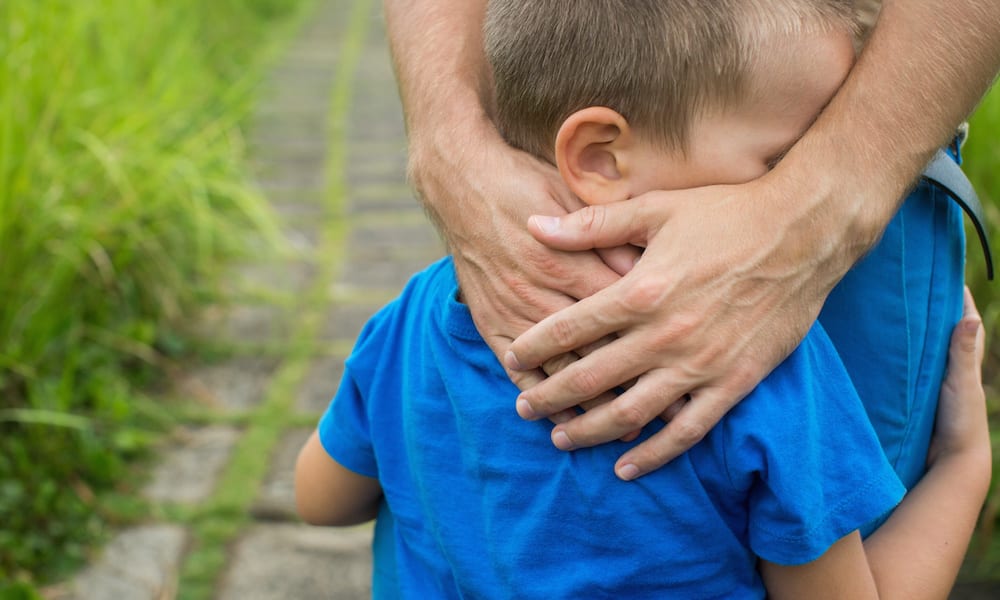Searching “ childhood anxiety ” produces about 67,800,000 results in 0.42 seconds in Google currently. Not surprisingly, the opportunity for parents to attend education sessions for managing anxiety in kids and the proliferation of child psychology clinics and services are plentiful. As a psychologist, I also have countless parents asking for help with their child’s anxiety.
Childhood anxiety – the facts
So how big is the issue of anxiety in childhood? Statistically, about 6.9% of all children and adolescents (an estimated 278,000 Australian children) aged 4-17 years are considered to suffer from an anxiety disorder. This means that anxiety disorders make up half of all mental health presentations for Australian children in this age group.
A recent Australian Government Report (2015) indicates an insignificant gender difference; meaning that primary school aged boys and girls, aged 4-11 years, appear to suffer anxiety in equal proportion. And of interest, in attempting to cluster diagnoses, the report tables:
The main type of anxiety disorders:
- social anxiety (1.6%),
- separation anxiety (4.9%),
- generalised anxiety (1.7%), and
- obsessive-compulsive disorder (0.8%)
Check this out though: the greatest cluster of childhood anxiety (being 6.9%) is referred to as “any anxiety disorder” – defined loosely as not the sum of having more that one anxiety disorder. Technically, that means that we don’t exactly know what is causing most of anxiety disorders in our kids.
Childhood anxiety – it’s not all bad
With the current focus on childhood anxiety, most parents now have a good understanding of the basics. Most people know that anxiety is naturally occurring; that we need some anxiety to fight/flight/flail (e.g., protect ourselves) when we unexpectedly encounter a boogieman. Being a natural human response, it doesn’t matter how much exposure to the boogieman you’ve had, you’ll still scream if you find him as an unannounced guest in your darkened kitchen at midnight. So we can never be completely anxiety-less.
Childhood anxiety symptons
When anxiety becomes a disorder is when this naturally occurring emotion starts to significantly impact on functioning. For young children, this may look like – an unwillingness to go school, difficulty leaving the house, trouble sleeping or eating, severe reluctance leaving mum/dad, poor friendship formation, repeated hand washing, having significant behavioural melt downs, etc. All of these things can be normal path and course of childhood, but significant, repeated disruption of socio-emotional functioning is what is considered a disorder of anxiety.
Resources for helping kids with anxiety
Kidsmatter states that: “Education settings are well-placed to comprehensively support children’s mental health and wellbeing in close collaboration with families and the community.” This is true, but made tricky if we don’t know exactly what it is we are supporting? Further, despite the mandatory requirement of psychology registration to work as a Guidance Counsellor, we are frequently called to help manage anxiety disorders …. but discouraged from asking why the child is anxious. Often, I receive referrals from private Psychologists that have completed numerous sessions and developed many anxiety strategies – but haven’t primary identified why the child is anxious in the first instance. And it would seem, that parents actively recruiting your help, don’t really want to know why either.
Here’s WHY I think your child is anxious.
Importantly, let’s look at why putting the ‘why?’ back into childhood anxiety diagnoses for children is critical. There are only four reasons why I think your primary school-aged child is anxious:
-
Really Obvious Trigger
Despite our best intentions as parents, sometimes our children do run into the boogieman. Death in the family, parents separating, loss of a pet, trauma (neglect and abuse), serious illness, moving schools, etc. can all represent ‘boogiemen’ that creates a normal anxious response in children. Psychologists call this exogenous anxiety, or an expected emotional response to something that is upsetting. Their ability to cope generally comes down to how parents/educators/counsellors/significant others help them to make sense of these things and resiliency factors.
-
Parent Factors
Anxious parents produce anxious kids. Whether this is via genetics or environmental learning or a combination of both is unclear, but parental factors are a strong determinant in anxiety disorders in children. This is not a blame-game, as parents, we also come with our own histories, significant events, temperaments, and experience of once being parented. But it is an important dynamic to understand.
-
Learning Difficulties
A common thread running through young children is; they hate being different from each other. The don’t like looking different, feeling different, going through different things, eating different lunches!, and specifically, a child becoming aware that they are learning differently can cause significant worry, anxiety and stress. Subtle differences in learning rates to learning disorders to intellectual disability – all tend to give rise to anxiety, that may produce behavioural disruption and school refusal.
-
Autism Spectrum Disorder
Likewise, feeling socially different appears to generate the extremely high levels of anxiety in children. This is arguably due to evolution, also – with our primitive brains being hardwired for successful, group inclusion as a survival strategy. Anxiety is an incredibly common presentation of autism spectrum disorder, with literature indicating that up to 80% of children with autism suffer anxiety. In the classroom, what this can look like is poor friendship skills, difficulty coping with transitions, rapid overstimulation, running from the classroom, behavioural meltdowns, etc.
Understandably, entertaining any of these 4 potential why’s is upsetting for parents.
Here’s why parents need to understand why their child is anxious
Each why leads to a distinctly different treatment pathway in more rapidly and effectively helping your child to feel less anxious sooner. For example, teaching a child with dyslexia to take three calm breaths is going to do little to remediate their learning disorder, or their resultant anxiety disorder. Similarly, spending ten sessions of clinical psychology with a child to remediate their worry then returning them to a home where a parent over responds to dirty hands is going to see far less therapeutic gains.
What to do if your child has anxiety
1. For really obvious triggers
Help children to understand that emotional responses to tough situations are normal, teach them to problem solve and ask for help, and focus on that primary attachment to help them feel safe again.
2. For parent factors
Invest in your own psychology and develop an understanding that anxious-parenting styles incidentally communicates to the child that the world is unsafe. This doesn’t mean being ‘perfect’ as a parent, this just means recognizing how important you are in helping to organise your child’s emotionality.
3. For learning difficulties
Cognitive assessment, targeted learning support, tutoring, and remediation will see a far quicker amelioration of anxiety than standard cognitive-behavioural therapies.
4. For autism spectrum disorder
Early intervention via Paediatrician assessment is critical not only in securing funded, multidisciplinary support (Helping Children with Autism Funding), but also in helping optimise children with autism at an earlier age. Psychological strategies are likely to focus emotional literacy and social skilling in the conjunction with anxiety management techniques, in the context of adjunct therapies such as Speech Pathology, Physiotherapy and Occupational Therapy.
In conclusion
So what we know is, that while some anxiety represents a natural, human response, the bulk of anxiety disorders, making up 50% of our paediatric (aged 4 – 17 years) mental health issues, is well outside of what our children should be experiencing. Hopefully, putting the ‘why is this happening?’ back into childhood anxiety, can be a pathway to better understanding and more effective childhood anxiety treatment, in reducing this current issue.
“4 Reasons Kids Today are Anxious & What Can Be Done to Help!” is a guest post from Dr Rachell Kingsbury – Guidance Counsellor (Clin. Psych & Clin. Neuropsych MAPS) and mum of two boys.



